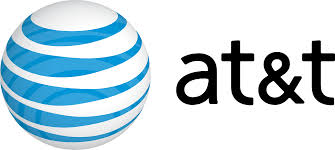 AT&T does not see fixed wireless millimeter wave broadband in your future if you live in or around a major city.
AT&T does not see fixed wireless millimeter wave broadband in your future if you live in or around a major city.
John Stephens, AT&T’s chief financial officer, today reiterated to shareholders that building a small cell network for urban and suburban fixed wireless service does not make much sense from a business perspective.
“It’s the cost efficiency,” Stephens told an audience at Cowen and Company’s 46th Annual Technology, Media & Telecom Broker Conference. “Once you [get] the fixed wireless connection from the alley to your house, that’s great you can do that, but you have to get it from the alley into the core network.”

Stephens
Stephens noted that once AT&T realized it would require a collection of small cells to hand wireless traffic off, “building that out can be very expensive when you’re likely doing it in an urban market in a residential area that already has a lot of fiber [or] a lot of competition [from] incumbent telephone and cable companies.”
AT&T sees a likely different future for fixed wireless based on in its ongoing trials underway in Austin, Tex. — selling the service to commercial and manufacturing customers with robotic equipment and other machinery that need instant and fast wireless communications to communicate with each other and back to a central point.
Stephens believes a better idea for its 30 million U-verse fiber-near-the-home customers is to extend fiber directly to those customers’ homes. Stephens said AT&T would be financially better off scrapping the remaining copper wire running the last 500 feet from a customer’s home or business to the nearest fiber-equipped pedestal and give customers dedicated fiber to the home service instead.
“It may be very inexpensive for us compared to the [5G] alternative and gives the customer a tremendous level of service,” Stephens added.
Where millimeter wave could make sense is in exurban and rural areas where clusters of homes could potentially be reached by fixed wireless, assuming there was fiber infrastructure close enough to connect those small cells to AT&T’s network. But AT&T seems to be more interested in applying the technology in commercial and Internet of Things (IoT) applications where wireless access can be essential, and would be much easier to deploy.
Verizon, in contrast, is expanding millimeter wave fixed wireless broadband trials, with the hope of selling a wireless home internet replacement.


 Subscribe
Subscribe
Millimeter wave hardware will be insanely expensive when it first hits the market. (eg. probably more than Fiber; in fact by some measures LTE costs much more than Fiber) In the near term there is more potential for fixed wireless in the 600-900 MHz areas. So far as I can tell these bands are underutilized in most rural areas (particularly mine) and if carriers upgrade existing towers, turn on more spectrum, tweak antennas and tune the system up for fixed wireless use they could certainly beat DSL for many people who are just past the end of cable/fiber networks. Not… Read more »